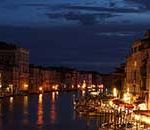When you imagine the opposite of science, you think of art. Art is creative, chaotic, colorful, and it uses the right side of your brain. Science is logical, organized, quantifiable, and it uses the left side of your brain. If you’re an art major and your friend is a science major, chances are you have none of the same classes and those classes are on the opposite sides of campus. But although art and science are often very different, it doesn’t mean they don’t overlap in some areas. As one example, take a look at space photography:
These photos are taken from highly technical and complex telescopes and imaging devices. Their sole purpose is to collect data from space and help scientists interpret it. But in the process of gathering the data and transforming it into an image, beautiful and abstract photos are created. It’s hard to image that something so practical, that something bound by the law of physics, could create such abstract and colorful imagery.

What looks like an artist’s canvas is actually an image from space.
Science is often thought of as boring and ordinary. But if you think about it, all of our photography is surrounded by science. The patterns in someones eyes, wood grain, or animal fur, the formation of clouds, ice, and fire, the changes in a flower, the sky, or human being. Science is responsible for all of the regular and irregular things we encounter in everyday life.

“Almost every branch of science produces things that are just absolutely gorgeous.
“It’s like looking at conceptual art where there’s some meaning behind it, some story behind it. When you begin to understand what it is you’re looking at, you begin to appreciate it on a different level.”
Like This Article?
Don't Miss The Next One!
Join over 100,000 photographers of all experience levels who receive our free photography tips and articles to stay current:





Leave a Reply